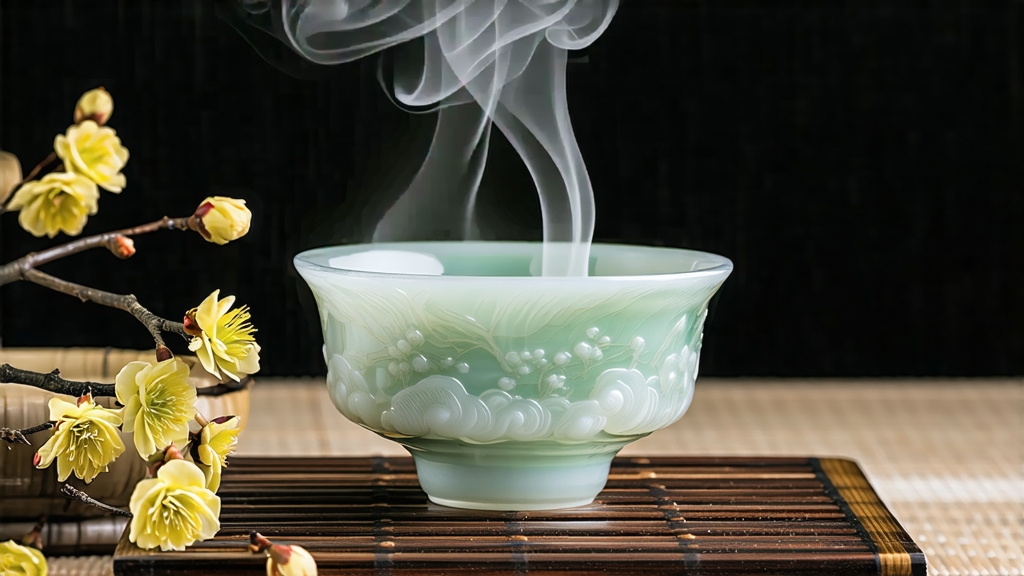
Tucked high in the mist-veiled Dabie Mountains of western Anhui province, a tea once so coveted that it traveled in silk-lined chests to the Forbidden City still survives in small, terraced gardens. Huoshan Huangya—literally “yellow bud from Huoshan”—is the least-known member of China’s six great tea families, yet it carries the most delicate signature of imperial taste. While green tea is celebrated for freshness and pu-erh for earthy depth, yellow tea occupies a whispered middle ground: the lively brightness of spring locked for one extra night in a warm, humid cocoon that turns leaf tips the color of old ivory and flavor into liquid chamomile-silk. To understand Huoshan Huangya is to witness the moment oxidation is neither encouraged nor refused, but gently delayed until the tea forgets its own greenness and remembers instead the scent of mountain orchids after rain.
History: from mountain herb to tribute treasure
The first written record appears in 西汉 dynasty local gazettes (104 BCE) describing “a golden sprout offered at the Tai-ping altar,” but the tea’s imperial career began under 明朝 Emperor Wanli in 1590. Magistrates of Huoshan county discovered that buds picked at the “grain-rain” solar term—when the 100th spring rain is said to fall—remained fragrant after the month-long journey to Beijing if wrapped in bamboo membrane and steamed lightly. The court pronounced it “huang cha,” yellow tea, not for the leaf color but for the golden liquor that matched the emperor’s robes. By 清朝 Qianlong’s reign, annual tribute quotas reached 200 kilograms; picking began under lantern light so that dew never touched the leaf, and every basket was sealed with the county magistrate’s own copper lock. When the empire collapsed in 1911, the gardens reverted to monks who kept seed stock alive in temple courtyards, saving the cultivar from extinction during the twentieth-century wars. Today fewer than 240 mu (16 hectares) of ancient seed-grown trees remain, scattered across Jinji Mountain, Sun Gate Valley, and the sacred peak of Moyun.
Micro-terroir: why only these slopes can create yellow buds
Huoshan county straddles 31° N at elevations between 400 and 800 m. The Dabie range traps the Yangtze’s humid air, creating 85 % average humidity and a 14 °C diurnal swing during April budding season. Granitic soils, rich in potassium and fluorine, force slow amino-acid accumulation; the local shroud of fog filters 28 % of UV-B, lengthening the theanine-to-catechin ratio and giving the tea its signature sweetness. Growers insist that three natural “treasures” must coincide: the first spring thunder to awaken the roots, three successive warm days above 18 °C to swell the bud, and a final cool night below 10 °C to lock in fragrance. When these conditions fail, even the most skilled master cannot coax true yellow color from the leaf.
Cultivar and grade hierarchy
The original heirloom population, Camellia sinensis var. sinensis cv. “Huoshan Daye Zhong,” bears unusually large buds—up to 3.5 cm—covered in such dense down that they resemble sleeping moth cocoons. Within the protected geographical indication, four grades are recognized:
• Special Grade (te ji) — one bud just opening into a single unfolded leaf, picked before 5 a.m., 3 000 buds yield 100 g finished tea.
• Grade One — one bud with one leaf, length < 2.5 cm, harvested only on the first three days after grain rain.
• Grade Two — one bud with two leaves, still soft enough to snap without fiber sound.
• Grade Three — allowed up to 50 % third leaf, but must retain visible tip.
Any leaf plucked after the solar term “summer begins” is rejected; villagers feed it to silkworms rather than sell it as yellow tea, believing post-term material lacks “mountain soul.”
Craft: the secret night of menhuang
What separates yellow tea from green is not an extra kill-green step but the opposite: a post-kill-green smothering called menhuang (“sealed yellowing”). The process is so timing-sensitive that masters sleep in the factory, setting alarms every 30 minutes.
- Kill-green (shaqing): buds are tossed in bamboo drums heated to